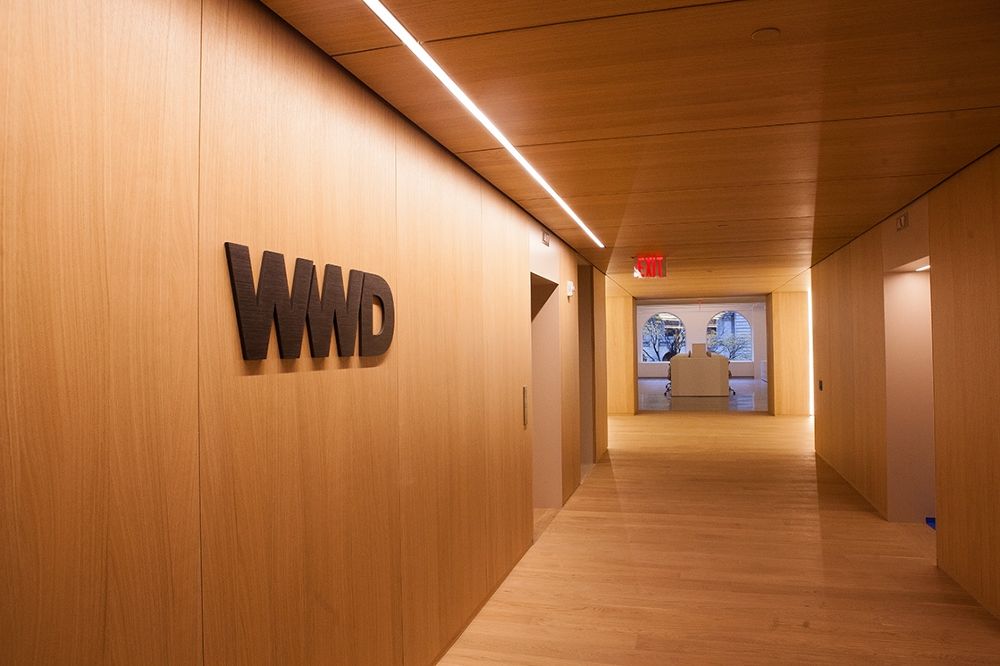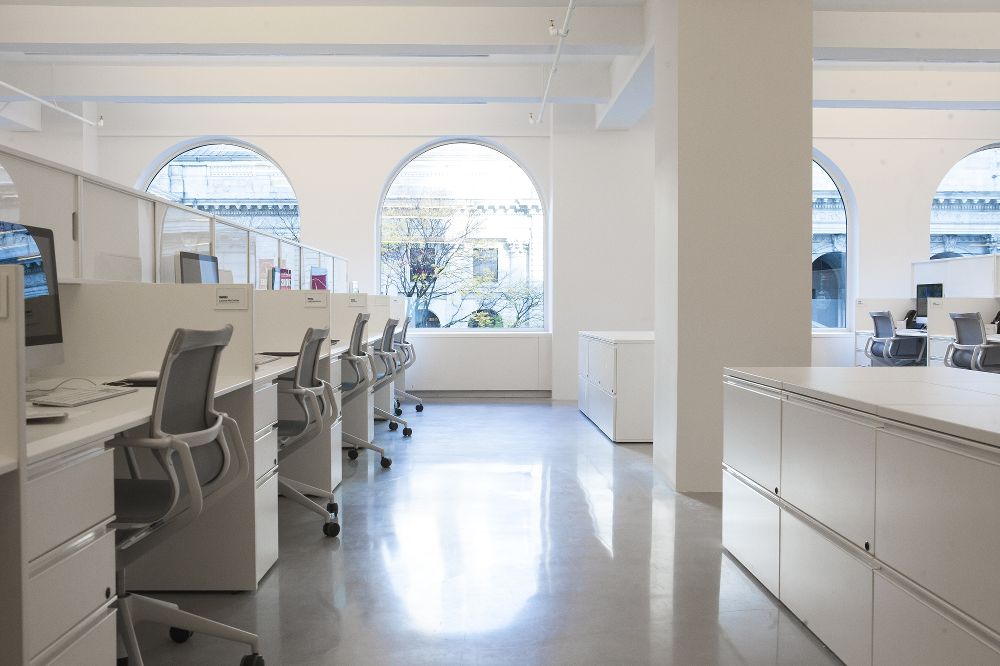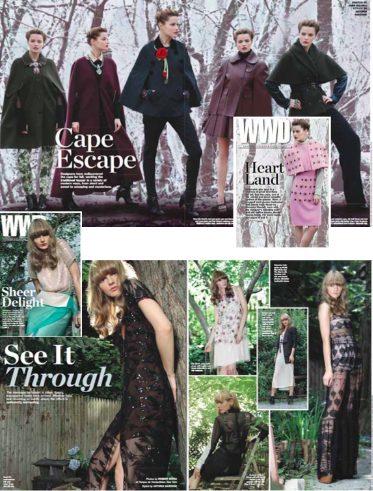Antonia Sardone is a fashion consultant, stylist, writer and freelance Market Editor. She went to college at FIT and majored in Marketing. During her career, she climbed the ladder at WWD and became Senior Market Editor. Learn about her career path and what she is up to these days below!
Walk me through your career path.
Most of my career was spent at WWD, where I started as an assistant, and worked my way up to Senior Fashion/Market Editor. Currently, I’m freelancing for WWD where I help during NYFW and am also writing for designers in terms of bios, press releases, etc.
Tell me about your time at WWD as a Market Editor.
Since WWD is a daily publication, we were on deadline everyday. I would go into market 2-3 times a week, and have a photoshoot once a week. I handled everyone from Helmut Lang to Calvin Klein Collection, mostly focusing on NY. During Resort and Pre Fall markets, I saw European designers because they showed their markets here. I loved developing relationships with designers during appointments. I was able to attend market, style and write, which allowed me to incorporate all of my passions.
I thrived on the always on the go and creative energy. I attended industry events at night, for example Calvin Klein would host a dinner or exhibit. We would go to cover and report on it, getting it posted online that night. Attending an event working for a publication with daily coverage is different than those who work at a monthly magazine. Those working at monthly magazines can be more social at events. They catch up with industry peers while viewing the collection, but don’t have to do anything with the coverage until the next season. Fashion is such a fun industry, and there’s a lot of support, especially with women.

Walk me through what conceptualizing a photoshoot looks like.
We start with collections. After runway shows, I put together a trend magazine, called WWD Collections with the runway footage. From there, we would break down the trends, for example the 80s, where we included items from both designer and contemporary price points to show that the trend is featured at all levels. We picked the location, model, hair/makeup for the shoot. After we received and edited the film, I would present it to Bridget Foley. Once we had the okay from her, I would write the credits and copy, and it was published the next week.

What do your market appointments look like?
The publicist would walk the collection with us and talk about the show. The pre collections were more involved since the designer was at the appointment. We would discuss their inspiration for the collection, which I included in the story. I pulled the looks I liked, and when the shoot was coming up, I would let them know and they’d send it over.
How do you get each freelancing job?
It’s been a mix of seeking out or coming to me. Every couple of months, I’ll send out emails to PR friends. We meet up for coffee, and discuss new clients that may need help. Sometimes, I go to designer’s showrooms to help them merchandise the collection or prepare for an appointment before a big retailer comes in. Most of the time, I am pitching story ideas to designers rather than them coming to me.
For press releases and bios, I meet with the designer and then put something together. It’s essential to establish the clients voice when you are working with them. In order to find their voice, I can look at what’s been done in the past and see what they were or weren’t happy with. The more you write, the stronger you become.

Walk me through the process of reviewing a show.
I try to go backstage right before or after the show to ask the designer their inspiration for the season. I jot down notes on what I did and didn’t like from the looks. WWD wants the review published online as quickly as possible, so 2 hours after the show, I send my copy through. Since shows are all over the city, I basically go into Starbucks and write reviews on my phone. We have great editors that can help put things eloquently if I was rushing.
If it’s a new designer, I try to give them a fair review. If I didn’t like a young designers show, I won’t give an opinion, I just tell what they did since there is so much of a learning curve in the beginning. Young designers put so much pressure on themselves to have a show, which can harm them instead of benefit. I’ve seen numerous designers come and go. They may have great fashion show reviews, but their business doesn’t move forward.
I always tell designers to take a step back and evaluate the collection. Instead of having a show, you could have something intimate and small in your showroom. This allows them to focus on fabrics and the quality of the clothes, because that’s ultimately what customers see. It’s great to have a glitzy show, but if you aren’t ready for it, don’t have one. Not everyone who has a line should have a show, it should come in time. Usually I cover 5-6 shows a day that I review.

What does fashion month look like for you?
I wrote 2-3 reviews a day, but went to almost all shows since I was putting together the trend magazine. They were long days from morning to night. There isn’t time to get back to the office, so I was carrying my supplies around with me. I tried to dress simple and chic since I was constantly on the go.
How did you learn to interview someone?
We had such an amazing staff. The junior editors accompany the senior editors to learn from them. I learned by watching them and seeing what questions they asked and how they interacted with the designers. You mimicked them and were inspired by their level of professionalism. I feel that I’ve built such a strong relationship with designers, because they are able to relax and have a friendly dialogue with me. We catch up on our personal lives, and also talk about the collection. Being nice and approachable goes a long way.

What have you done to set yourself apart?
My ability to keep calm and not get wrapped up in drama. There is so much in life that’s negative, so at work I try to keep a positive environment.
How have you learned to be a writer?
I went to FIT and studied fashion journalism, so I always had a passion and love for writing. If you’re writing about fashion, it becomes a formula. Once you establish it, you have an outline for each piece. I also had great people who guided me through.
Walk me through the process of putting together an article.
If I’m interviewing a designer for WWD, I would spend about a day researching and figuring out what questions to ask. I look at their clothes, and see what they’ve done in the past. I would go to the interview and ask the questions, then I had a 2-day max turnaround.
I go in, we have the interview and walk through the collection, they tell me what they were thinking, show me their inspiration boards and within the next two days, I have it written. This is due to my training at WWD always having the feeling to get it out there immediately. All of my clients appreciate my timeliness, and we have room to make any necessary changes.

What do you wish someone had told you at the beginning of your career?
I wish someone told me to play the game more. So much of what gets you ahead in fashion today has become more of your ability to network than your working skills. Having a blog, which allows you to be the “it” girl and be photographed is beneficial in today’s landscape.
What’s the next step for you?
I’m going to keep working freelance with my clients, and focus on life and my family.
Delia Folk
BY

Thank you very much you have presented a very nice information to everyone it will help people a lot
So happy to hear!!